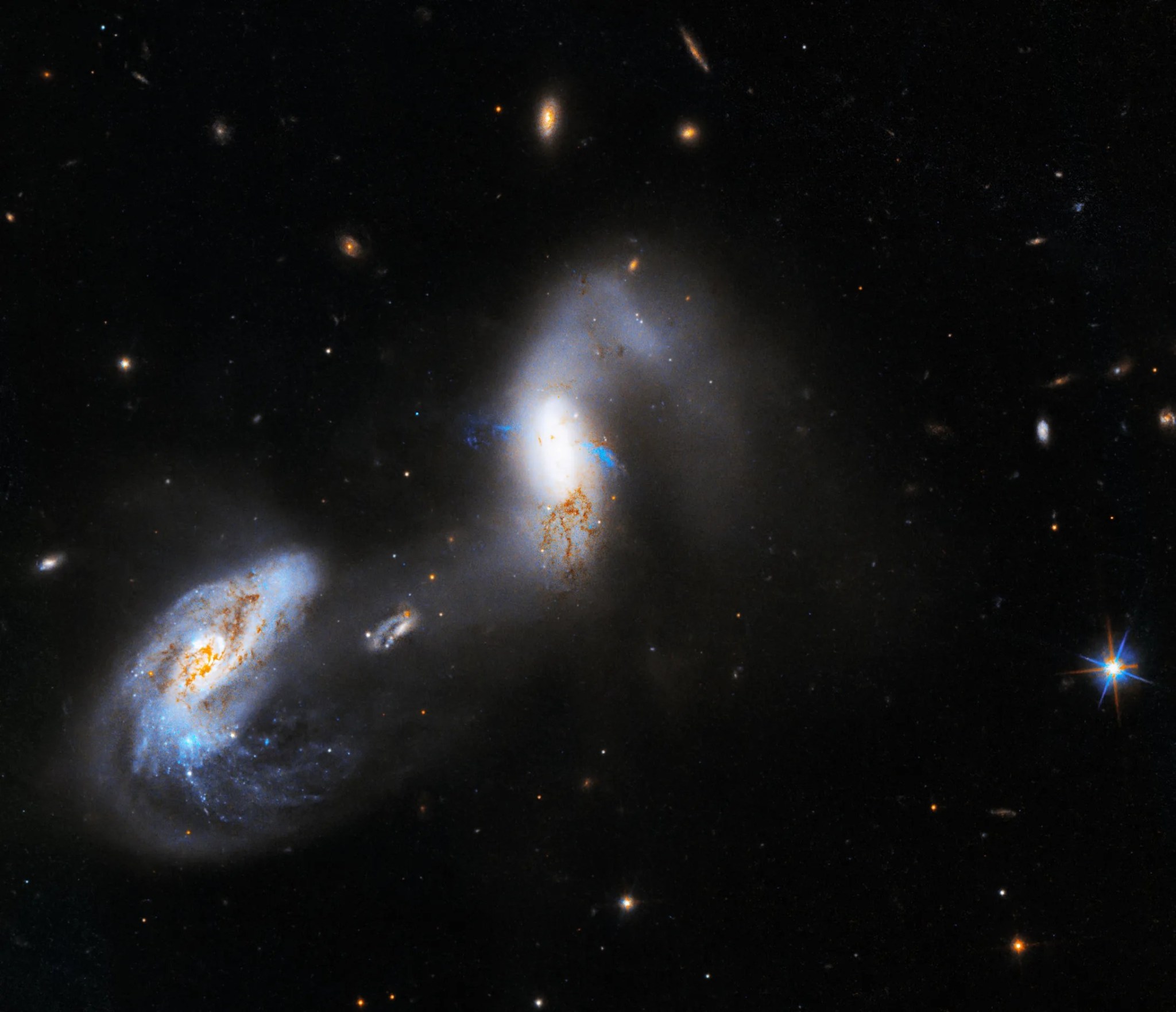This new image from NASA’s Hubble Space Telescope shows interacting galaxies known as AM 1214-255. These galaxies contain active galactic nuclei, or AGNs. An AGN is an extraordinarily luminous central region of a galaxy. Its extreme brightness is caused by matter whirling into a supermassive black hole at the galaxy’s heart.
Hubble observed the galaxy closest to the center as part of an AGN survey, with the aim of compiling a dataset about nearby AGNs to be used as a resource for astronomers investigating AGN physics, black holes, host galaxy structure, and more.
Media Contact:
Claire Andreoli
NASA's Goddard Space Flight Center, Greenbelt, MD
301-286-1940







































